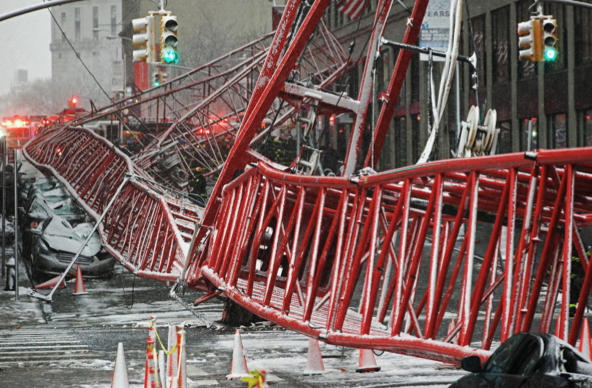Industrial operations depend on overhead bridge cranes to lift and move heavy loads. But cranes pose inherent risks; accidents involving cranes can cause extensive damage and result in significant property losses, injury or even death. Understanding and mitigating these risks — through proper training, regular inspections and adequate maintenance, among other actions — is essential to manage the probability of catastrophic losses.
Overview of overhead bridge cranes
Overhead bridge cranes operate with a trolley-mounted hoist that traverses a bridge structure and are used to lift and transport heavy materials, often in industries such as steel and metal, shipbuilding and marine, manufacturing, power generation, aerospace, as well as warehousing and logistics. But not all overhead bridge cranes are equal — there are multiple types in different sizes, each with specific uses and implications.
Any bridge crane contains a girder — the horizontal beam that serves as the main structural component of the crane. Single girder cranes, a common type of bridge crane, have only one main beam across the span of it, while double girder cranes have two beams. Due to the greater stability the second beam provides, double girder cranes generally have a higher lifting capacity — an ideal choice for industrial settings where heavy loads need lifting. A single girder crane, on the other hand, is more compact and lightweight, and easier to install and maneuver in tight spaces.
In a top-running bridge crane, the bridge is supported by rails mounted on the runway beams and the trolley moves along the top, while an under-running crane’s bridge runs underneath the beams and the trolley and hoist move along the bottom. The former is designed for heavier loads and longer spans, and the latter is advantageous in situations with limited headroom or low ceilings. Finally, gantry cranes — typically used in shipping yards and loading docks, and to service airplanes, boats or other heavy machinery — are supported by legs that travel on fixed rails or wheels, which allow the crane to travel along a linear path.
Loss scenarios and common causes
Property losses most commonly occur during the erection or dismantlement stage, in cases where the crane is improperly assembled or disassembled. In one extreme event, a tower crane collapsed on the East Side of Manhattan during construction, resulting in seven deaths and 24 others injured. Those assembling and operating the crane disregarded the manufacturer’s instructions regarding lifting the stabilizing collar — which effectively anchors the crane to the building — and used only half the recommended number of polyester straps to lift the collar. The overloaded straps failed.
A failure to operate the crane safely and neglecting to monitor surroundings is a common cause behind property losses as well. In one instance, a 600-foot-tall crawler crane collapsed on a street in Lower Manhattan, falling onto nearby buildings, parked cars and pedestrians — killing one person and injuring three others. The collapse was caused, in part, by high winds that were reportedly stronger than expected, but an investigation found that a series of errors by the crane operator also contributed to the collapse.
In other instances, an equipment failure occurs, or improper/inadequate maintenance leads to parts becoming worn or defective. Losses can also result from a design or manufacturing defect. One loss scenario occurred at a nuclear plant in Russellville, Arkansas, when a structural design flaw resulted in a temporary overhead crane collapsing into one of the plant’s buildings, killing one worker and injuring eight others. It was later determined that the crane’s structural columns lacked the appropriate diagonal braces and lateral ties, creating instability in the columns. Additionally, welds did not undergo required tests, the crane was designed to handle a lighter hook load than required, and the crane was not load-tested prior to its use — a violation of OSHA requirements.
Steps of a forensic investigation
After a crane failure loss occurs, a forensic investigation must commence that follows a strict procedure. First, the site is secured, and evidence is preserved. All available documentation related to the crane and its operation should then be collected, including maintenance records, operator logs and inspection reports. A thorough inspection of the crane and its components follows, including a visual examination and non-destructive testing to identify any potential defects or failures.
Interviews are then conducted with the crane operator, rigger, site supervisor and maintenance personnel, and the evidence gathered during the inspection is analyzed to identify the failure’s root cause. Once the cause is determined, a comprehensive report should be developed that details the investigations findings and provides recommendations to prevent future incidents.
Mitigating property loss risks
Companies can take several crucial measures to reduce the potential for property loss or injury resulting from overhead crane activities. Regular crane inspections should be performed to ensure equipment is functioning correctly, as should adequate maintenance and repair to improve its reliability. Crane operators should undergo continuous training to improve their crane operation and workplace safety knowledge. Finally, personnel should regularly review safety procedures and interventions to reduce the frequency of accidents.
Learn more — read the full commentary paper and explore EFI Global

